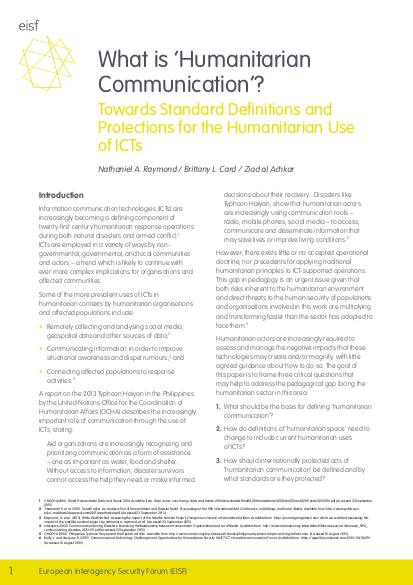
Information communication technologies (ICTs) are increasingly becoming a defining component of twenty-first century humanitarian response operations during both natural disasters and armed conflict. However, there exists little or no accepted operational doctrine, nor precedents for applying traditional humanitarian principles to ICT-supported operations. Humanitarian actors are increasingly required to assess and manage the negative impacts that these technologies may create and/or magnify, with little agreed guidance about how to do so.
The goal of this paper is to frame three critical questions that may help to address the pedagogical gap facing the humanitarian sector in this area:
- What should be the basis for defining ‘humanitarian communication’?
- How do definitions of ‘humanitarian space’ need to change to include current humanitarian uses of ICTs?
- How should internationally protected acts of ‘humanitarian communication’ be defined and by what standards are they protected?
